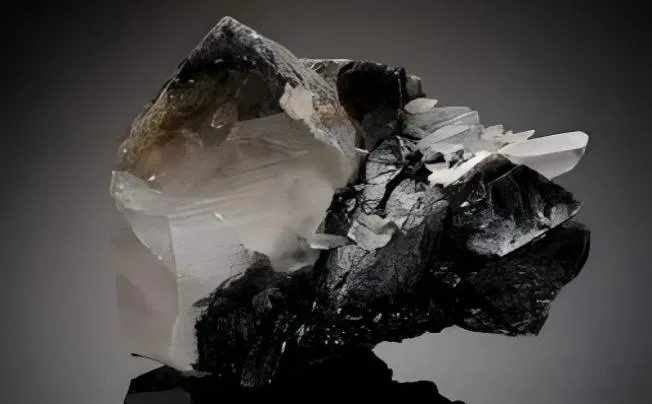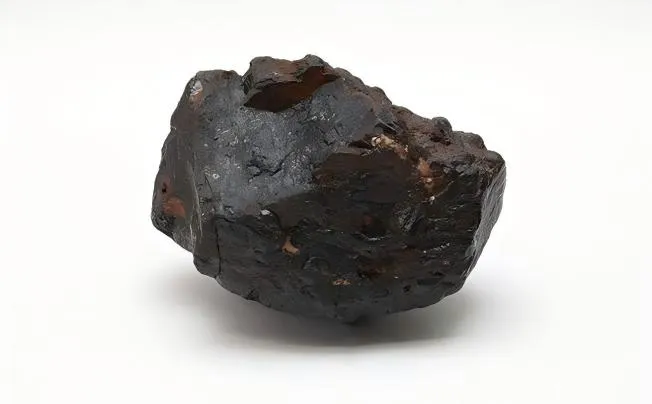Alloys have played a paramount role in the development of human civilization, shaping our societies and technological advancements. Defined as a mixture of two or more elements, with at least one being a metal, alloys possess unique properties that often surpass those of their components.
Overview of the Evolution of Metallurgy and Alloy-Making Processes
The Historical Tapestry Woven with Metal Threads
Metallurgy traces its roots back over 6,000 years ago when early humans began experimenting with native metals like gold and copper found abundantly in nature—even before they fully comprehended their chemical properties or potential applications. Initially limited to pure metal objects crafted through hammering or casting techniques this nascent phase is known as “native metallurgy.” However—as human creativity flourished so did technological advancements—leading society deeper into what we now recognize as metallurgy: science coupled with art dedicated to extracting maximum utility from elemental resources.
Introduction to the Quest for the First Alloy Made by Humans
As historians delve deeper into metallurgical studies surrounding early civilizations' crafting techniques—it becomes apparent that unearthing evidence pertaining specifically to humanity’s inaugural creation remains elusive yet tantalizingly intriguing! While many scholars posit copper was among the earliest refined metals utilized around 8000 B.C.E., confirming comprehensive insight about subsequent amalgamation processes takes us down treacherous paths lined with speculative conjectures intertwined cleverly alongside archaeological discoveries documenting fragmented narratives only piecing together parts rather than entire stories themselves!
To unravel this mystery requires interdisciplinary collaboration marrying archaeology alongside chemistry along history itself; blending insights drawn forth provides glimpses not just how people interacted but also what motivated them while conjuring questions reaching beyond mere technicalities towards broader reflections on identity formation amidst socio-economic realities fueling change across geographic scopes! Thus emerges our profound interest surrounding inquiry oriented towards identifying 'firsts' within metallurgical advancement—a reflection on humanity’s ability to innovate and constantly seek greater excellence despite often stumbling along roads paved unpredictably laden obstacles meant to challenge ingrained assumptions prevailing notions regarding craft mastery reign supreme since antiquity until modernity emerged full force bearing witness extraordinary metamorphosis responsible shaping landscapes both tangible intangible realms alike!
The Dawn of Metalworking: Techniques that Shaped Civilization
The early techniques of metalworking, notably smelting and casting, represent a pivotal turning point in human innovation. Smelting, the process of extracting metal from its ores through heating and melting, enabled ancient artisans to transition from a dependence on mere stones to the manipulation of metals. This technique emerged around 5000 BCE in regions abundant with copper ores—foremost among these were the rich deposits found in Anatolia and the Caucasus.
The advent of controlled fires capable of reaching higher temperatures marked a significant technological leap, allowing ancient metallurgists to unlock the potential hidden within ores. Casting followed as an equally revolutionary technique that allowed for greater complexity in metal objects.
In this process, molten metal is poured into molds to create desired shapes—a method that facilitates artistry alongside utility. The earliest known cast metals date back to around 4000 BCE in Mesopotamia, where skilled craftspeople produced decorative objects as well as tools and weapons.
As molds became more sophisticated over time, artisans began experimenting with different shapes and styles, leading to intricate designs that would define cultures across continents. Together, smelting and casting catalyzed a renaissance in craftsmanship; they not only increased efficiency but also allowed for mass production of metal items.
The Birth of Copper Alloys
Discovery and Utilization of Copper as One of the Earliest Metals Used by Humans
In the annals of human history, the discovery and utilization of copper marked a pivotal moment in our technological evolution. Dating back to the Chalcolithic period around 4500 BCE, ancient civilizations like the Sumerians and Egyptians unearthed the malleable beauty of this reddish-brown metal.
With its ability to be easily extracted from ores and shaped into tools and ornaments, copper quickly became prized for its versatility. Its conductivity also made it ideal for early electrical applications, foreshadowing future innovations.
Development of Copper Alloys Through Experimentation with Tin, Arsenic, and Other Elements
As adept metallurgists honed their craft, they began to experiment with combining copper with other elements to enhance its properties. Among these early alchemists were those who discovered that alloying tin with copper produced a remarkable new material: bronze.
The addition of tin imbued copper with increased strength and hardness, revolutionizing tool-making and warfare capabilities. Furthermore, alloys such as arsenical bronze—created by incorporating arsenic— showcased different characteristics suitable for specific purposes.
Lesser-Known Alloys in Antiquity
In the annals of human history, beyond the well-known bronze and iron alloys, lie hidden treasures of ancient metallurgical craftsmanship. One such remarkable alloy is electrum, a natural amalgam of gold and silver that captivated civilizations with its mesmerizing luster and malleability.
The alluring beauty and rarity of electrum made it a prized material for crafting intricate jewelry, coins, and ornaments in regions like ancient Lydia and Egypt. Tumbaga, another lesser-known alloy from antiquity, was a sophisticated blend of gold and copper that boasted both durability and versatility.
Meticulously crafted by skilled artisans in pre-Columbian societies such as the Incas and Aztecs, tumbaga exemplified the fusion of artistic expression with metallurgical ingenuity. This unique alloy not only adorned regal attire but also served as a symbol of wealth and power in ceremonial contexts.
Modern Discoveries in Alloy-Making
In recent decades, the field of metallurgy has witnessed a profound transformation driven by technological advancements and an increasing understanding of material science. Researchers today utilize sophisticated methods such as computational modeling, high-throughput experimentation, and advanced characterization techniques to design and engineer alloys with unprecedented properties.
These modern methodologies allow for the fine-tuning of elemental compositions at atomic levels, enabling the creation of tailored materials that cater to specific industrial needs. One monumental area of discovery focuses on lightweight alloys designed for aerospace applications.
Additionally, innovations in additive manufacturing—commonly known as 3D printing—have introduced entirely new possibilities in alloy creation. Through this technology, complex geometries can be built layer by layer using bespoke metal powders, which not only allows for reduced material waste but also paves the way for unprecedented designs that were once thought impossible.
Moreover, researchers are keenly investigating smart alloys that respond dynamically to environmental changes. Shape memory alloys (SMAs) exhibit remarkable properties wherein they can return to their original shape after being deformed when exposed to certain stimuli like heat or stress.
This characteristic is being harnessed in various cutting-edge applications ranging from medical devices—such as stents that expand upon body temperature—to robotics where adaptability is crucial. The interrelation between traditional alloy-making techniques and modern technological innovations promises an exciting era filled with materials capable of enhancing our everyday lives.







